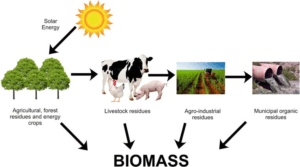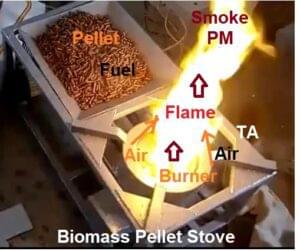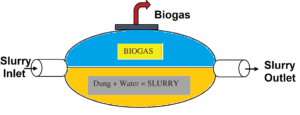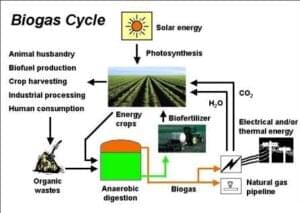Choice of Biomass and Biogas?
- The choice between burning biogas and biomass should consider factors such as feedstock availability, local infrastructure, and specific energy goals.
- It’s important to note that the cost dynamics of both biomass and biogas can change based on technological advancements, government policies, economies of scale, and regional variations. In some cases, government incentives, subsidies, and support mechanisms can influence the cost competitiveness of both options
- Both biomass and biogas have their advantages and disadvantages, and the “better” option can vary depending on the specific circumstances and goals of a project. Here’s a comparison of the two:
Which is preferable to burn biogas rather than biomass?
- It’s important to note that both biogas and biomass have their roles and advantages in the renewable energy landscape.
- Biomass can still be a valuable resource for energy production, especially in areas where biogas production infrastructure is limited or where biomass waste is abundant and sustainable management practices are in place.

Cost of Biogas Generation
- It is generally said that the average cattle yield is about 10 kg dung per day.
- For eg. the average gas production from dung may be taken as 40 lit/kg. of fresh
- Biogas is composed mostly of methane (CH4), the same compound in natural gas, and carbon dioxide (CO2).
- The methane content of raw (untreated) biogas may vary from 40%–60%, with CO2 making up most of the remainder along with small amounts of water vapor and other gases
What is Biomass Energy:
Biomass is a renewable energy source derived from organic materials. These organic materials can come from a variety of sources, including:
Source of Biomass
Biomass refers to organic materials, such as wood, crop residues, and agricultural waste

Agricultural Residues: Crop residues left in the fields after harvest, such as corn stalks, wheat straw, rice husks, and sugarcane bagasse, can be used as biomass feedstock.
- Forestry Residues: Wood chips, sawdust, bark, and other residues from forestry operations can be used as biomass fuel.
- Energy Crops: Certain fast-growing crops, such as switchgrass and miscanthus, are grown specifically for biomass energy production.
- Food and Yard Waste: Organic waste from households and businesses, including food scraps, yard trimmings, and leaves, can be converted into biomass through composting or anaerobic digestion.
- Animal Manure: Manure from livestock, such as cows, pigs, and poultry, can be processed in anaerobic digesters to produce biogas, a form of biomass energy.
- Algae: Algae can be cultivated and processed to produce biomass for biofuels, including biodiesel and bioethanol.
- Municipal Solid Waste (MSW): Organic components of municipal solid waste, like paper, cardboard, and organic food waste, can be used as a source of biomass.
- Aquatic Plants: Some aquatic plants, like water hyacinth and duckweed, can be harvested and processed for biomass energy.
- Waste Wood: Wood waste from construction and demolition activities, as well as discarded furniture and pallets, can be used as biomass fuel.
- Industrial Waste: Certain industrial processes generate organic waste materials that can be used as biomass feedstock. For example, the pulp and paper industry generates wood pulp waste that can be burned for energy.
- Energy Crops: Some crops are grown specifically for biomass energy production. Examples include switchgrass, miscanthus, and willow trees.
- Urban Green Waste: Yard waste and tree trimmings collected from urban areas can be processed into biomass.
- Algal Biomass: Algae can be cultivated and harvested to produce biomass for biofuels, such as biodiesel.

Energy Conversion:
- Biomass can be burned directly for heat or converted into biofuels (like biodiesel or bioethanol) for transportation or electricity generation.
- Biomass pellet stoves have been used nowadays to reduce pollution due to biomass wood burning

Advantages:
- Readily available in many regions, especially in agricultural areas.
- A versatile fuel source, can be used for heat, electricity, or liquid biofuels.
- Can contribute to waste reduction and sustainable land management.
- Can be used for power generation even without advanced technology.
Challenges:
- High moisture content in some feedstocks can reduce energy efficiency.
- Emissions can be an issue if not managed properly.
- Availability can be seasonal.
What is Biogas and Its Scopes in Rural Areas:
The scope of biogas plants and their types are presented in the previous post.
Source of Biogas
- Biogas is produced by anaerobic digestion of organic materials like food waste, agricultural residues, and animal manure.

Energy Conversion:
- Biogas primarily consists of methane (CH4) and carbon dioxide (CO2) and can be used directly for heating, electricity generation, or as a vehicle fuel.

Advantages of Biogas
-
- Generates methane-rich gas that can be a direct replacement for natural gas.
- Reduces methane emissions from organic waste decomposition.
- Can be produced year-round from various organic sources.
- Produces valuable byproducts like digester, a nutrient-rich fertilizer.
Challenges:
-
- Requires controlled anaerobic digestion systems.
- Feedstock quality and consistency are crucial for efficient biogas production.
- Initial infrastructure costs can be high.
- Competition for feedstock (e.g., food vs. energy production) can be an issue.

Which is Biomass or Biogas better for Cooking
Feedstock Availability:
- If you have a readily available and consistent source of organic waste, biogas might be a better choice.
- If you have ample supplies of agricultural residues, biomass may be more suitable.
Energy Use:
- Consider your energy needs. Biogas is well-suited for heating and electricity generation, while biomass can be converted into a wider range of energy forms, including liquid biofuels.
Environmental Impact:
- Biogas can be more environmentally friendly, particularly in terms of reducing methane emissions from waste, but it requires proper waste management practices.
- Local Infrastructure: The availability of biogas digesters, gas storage, and distribution infrastructure can influence your choice.
- Project Goals: Your specific project goals and objectives, such as waste reduction, carbon footprint reduction, or energy independence, should guide your decision.
Conclusion
- The choice between biomass and biogas depends on several factors, including the availability of feedstock, intended use, environmental considerations, and local infrastructure.
- Ultimately, there’s no one-size-fits-all answer, and the choice between biomass and biogas should be based on a thorough assessment of the local conditions and goals of the project. In some cases, a combination of both biomass and biogas systems may be the most effective solution.
